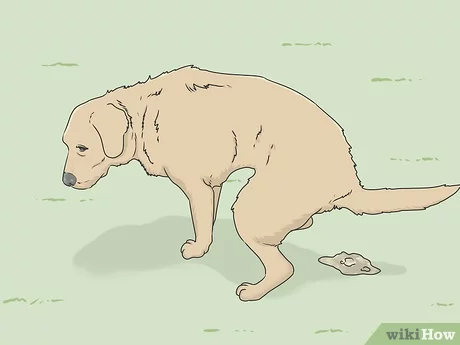Contents
Giardiosis in dogs: how to treat it?
Giardiasis is a common parasitic disease in dogs that mainly results in diarrhea. It is a not very serious condition but very contagious and sometimes difficult to treat, especially in communities. We present here the essential points to know about this disease and the means of treating it.
Giardiasis is caused by an intestinal parasite
Giardiasis is caused by a digestive parasite called Giardia intestinalis (or Giardia duodenalis). It is a protozoan, that is to say a being formed of a cell.
This parasite exists in two forms:
- Trophozoites: the active form found in the digestive tract of animals. This is the form that will multiply in the small intestine using the nutrients digested by the dog. Digestive disorders are due to dysfunction of the intestinal mucosa caused by trophozoites;
- Cysts: the dormant form that allows new animals to be infested. Cysts are produced by trophozoites in the small intestine and then released into the environment through stool. This very resistant form can survive for months in hot and humid environments.
The parasite is transmitted by ingestion of cysts present in the environment contaminated by feces: contaminated water, animal coats, toys and utensils, soil.
Young dogs are most affected by the disease
Giardiasis is a common disease in dogs. In Europe, around 3% to 7% of dogs carry it. In the majority of cases, affected dogs are asymptomatic, especially adults who have developed a sufficient immune response. These are then healthy carriers who are not sick but who continue to secrete cysts into the environment.
The parasite is more frequently encountered in young animals, in which the disease occurs more often.
Symptoms that may be observed are as follows:
- Chronic, often intermittent diarrhea;
- Discolored, bulky, soft and very odorous stools. We sometimes observe the presence of a fatty-looking mucus on the stool (steatorrhea);
- No decrease in general condition;
- Possible gradual weight loss;
- Dull / uneven coat.
The disease progresses slowly and the prognosis is often good. Complications are found in very young or old, immunocompromised, weakened animals.
Due to its strong contagiousness, giardiosis is often found in community contexts, where several dogs cohabit or meet frequently (breeding, kennels, dog parks).
Medical treatment and environmental disinfection are essential
Diagnosing giardiasis can be difficult because many different diseases create diarrhea and affect the same type of population. It is important to mention the history of the disease and the dog’s lifestyle.
The veterinarian will perform a complete clinical examination and may carry out additional examinations to establish a diagnosis.
A coprological exam (examination of dog stools) is often used to observe the parasite in the droppings. This examination can be done in the laboratory or in the clinic. Sometimes it is necessary to collect stool samples over several days to do this.
There are also rapid tests to be performed in the clinic, but the reliability of the results is variable. Other more precise tests are offered by certain laboratories: PCR, immunofluorescence.
Giardiosis can be treated with anti-protozoan therapy such as fenbendazole or metronidazole. This treatment lasts several days and can be renewed in the event of recurrence.
In addition to medical treatment, it is essential to put in place hygiene measures to limit new infestations: use a disinfectant shampoo on the dog’s coat to evacuate the cysts present and disinfect the environment and soiled objects.
Prevention measures in breeding and importance in public health
Giardiasis is of particular importance in farms or kennels because it can spread quickly and persist due to re-contamination.
In the event of illness, all animals should be treated to eliminate potential healthy carriers involved in the spread of the parasite.
Even more important are the associated hygienic measures. It is recommended to clean, dry and then disinfect the premises with bleach, chloroxylenol or quaternary ammoniums. Bedding should be washed at 60 ° or more. A 48-hour crawl space is recommended before any reintroduction of animals.
A screening test and quarantine can be carried out when a new animal is introduced into a home or community.
Giardiasis also raises public health questions because it is a zoonosis. The parasite can indeed infest humans but also cats and many mammals.
The risk of contamination of humans by dogs is however considered to be very low because the strains most found in dogs are rarely present in humans. In addition, the disease is often mild for a healthy adult human.
Symptoms appear especially in children and people with weakened or immunocompromised conditions.
If your dog has giardiasis, there is nothing to worry about as long as strict hygiene measures are in place.
Conclusion
The treatment of giardiosis is based on the use of an anti-protozoan and essential hygienic measures. In the event of signs corresponding to the disease on your animal, it is not an emergency situation but contact your veterinarian to relieve the diarrhea and limit the spread of the parasite as quickly as possible.










